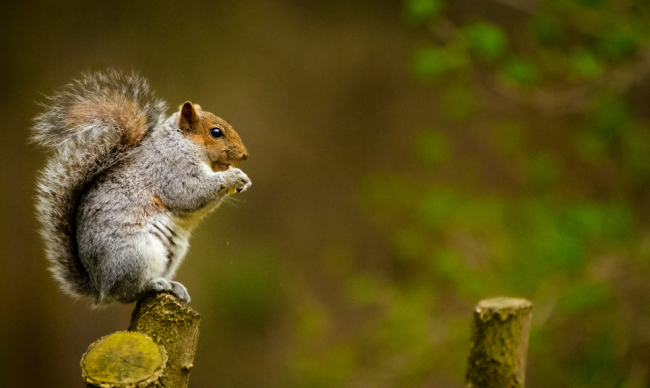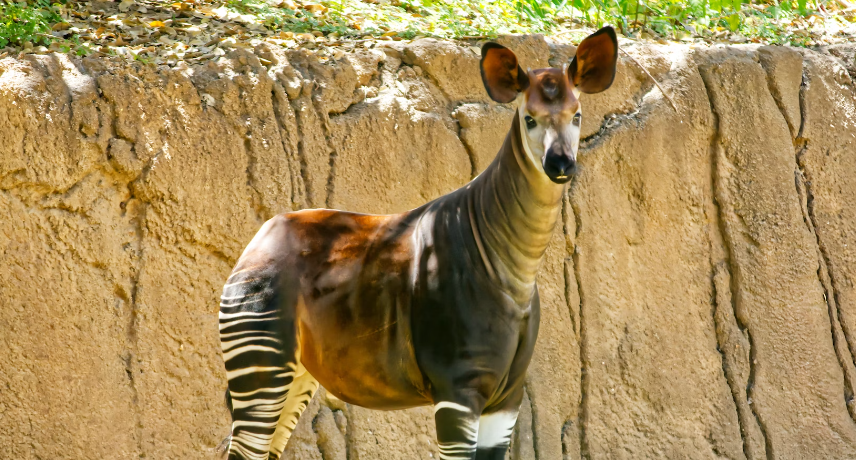Everything You Need to Know About Squirrels

© Shane Young / Unsplash
From large to small, from red to black, these squirrels are as unique as they can get. And, while you think you already know enough about them, there is plenty more information you definitely should not miss out on! Squirrels while widely referred to as simple nut-eating animals, serve a greater purpose in nature. Here is everything you need to know about these furry friends.
What Exactly Are Squirrels?
Squirrels are small to medium-sized rodents belonging to the family Sciuridae. They are known for their distinctive bushy tails, sharp claws, and strong hind limbs. They are found in various habitats, including forests, urban areas, and parks, and they are native to many parts of the world.

There are over 200 different species of squirrels, and they come in a variety of colors and sizes. The most common types include tree, ground, and flying squirrels. Tree squirrels are adept climbers and are often seen scampering up and down trees. Additionally, ground squirrels, as the name suggests, primarily live on the ground. Flying squirrels, despite their name, don’t fly but glide between trees using a membrane called the patagium, which stretches between their front and hind limb.
Their Diet and Seed Disposal
Squirrels are herbivores, and their diet typically consists of nuts, seeds, fruits, and sometimes fungi. They are known for their habit of storing food, especially nuts, in hidden locations for later consumption. This behavior helps them survive periods of scarcity.
They also play important roles in ecosystems by helping with seed dispersal, promoting tree regeneration, and serving as prey for various predators. Moreover, they are also popular and familiar animals in many urban areas, where they may be both loved for their playful antics and considered pests for their ability to damage gardens or attics.
Where Do They Live?
These animals are found on every continent except Australia and Antarctica. Tree squirrels inhabit wooded areas, ground squirrels dig burrows, and flying squirrels glide between trees using a membrane. Some squirrels hibernate in burrows during winter. Despite the common belief that they only eat nuts, they are omnivores, consuming fungi, seeds, nuts, fruits, eggs, insects, and even small animals and snakes. On average, they eat about one pound of food per week.
Rare and Unique Squirrel Types
The world is home to several extraordinary squirrel species, each with distinctive features that set them apart. One such example is the tufted ground one, exclusive to Borneo, characterized by a tail that is an astonishing 130 percent the size of its body.
Another remarkable species is the Kaibab squirrel, residing solely in the Grand Canyon Region of Arizona. Recognizable by its pure white tail, this animal has evolved to thrive in a specific geographical area, emphasizing the localized adaptations that can occur within the family.

The Indian palm squirrel stands out with striking brown and white stripes, inspiring a Hindu legend. According to the legend, a helpful squirrel received strokes from the deity Lord Rama, resulting in distinctive finger strokes down its back. Moreover, this folklore adds a cultural dimension to the diversity of squirrel species, highlighting their significance in various cultural narratives around the world.
How Do Squirrels Plant Trees?
These animals serve a vital ecological role in the survival and propagation of many tree species. The seeds they scatter, often those carried farthest away, stand a better chance of germinating when the soil thaws. This process allows for the growth of new trees, providing them an opportunity to thrive independently. Additionally, this dispersal mechanism is particularly crucial for tree species producing heavy seeds that may struggle to sprout if they fall too close to their towering parent trees.
The significance of these animals in this process is evident in the case of chestnut trees, which heavily rely on these furry creatures for seed dispersal. However, other tree varieties, including pine, beech, hazel, and oak, also owe a debt to squirrels for their role in the propagation cycle.
Fun Facts About Squirrels
Here are some additional facts about our furry friends:
5. The Biggest Type Ever
Squirrels exhibit a wide range of sizes among different species. The Indian giant squirrel holds the title of the largest squirrel species, boasting an impressive length of up to 36 inches (1 meter). On the opposite end of the size spectrum is the African pygmy squirrel, a diminutive species measuring merely 2.8-5 inches (7-13 cm). Moreover, this diversity in size highlights the adaptability and variety within the family, showcasing their ability to thrive in various environments around the world.
4. They Recognize Nuts Easily
They possess remarkable sensory abilities that aid them in foraging and identifying suitable food sources. Their keen sense of smell allows them to recognize ripe nuts, ensuring they select the most optimal and nutritious options for consumption. Additionally, they demonstrate a unique skill in detecting if an acorn or hazelnut has been hollowed out by weevils. They achieve this by recognizing the lighter weight of affected nuts.
3. They Have “Dreys”
Squirrels exhibit impressive architectural skills when it comes to creating their nests, known as ‘dreys.’ These compact and spherical structures, slightly lighter than footballs, are meticulously crafted using a combination of twigs, leaves, bark, and grass. Moreover, dreys serve as cozy abodes for squirrels and are commonly constructed in the secure forks of tall trees.
2. Fast and the Furious
Squirrels showcase remarkable agility and physical adaptations that contribute to their exceptional mobility. Capable of reaching speeds up to 20 mph, they are swift runners. Additionally, this enables them to navigate their environments with speed and efficiency. Their feet are equipped with padding, serving as natural shock absorbers. This lets them make jumps from heights of up to 20 feet without sustaining injuries.
1. They Have Four Front Teeth
These animals possess a fascinating dental adaptation that plays a crucial role in their survival. They have four front teeth, two upper and two lower, which continue to grow ceaselessly throughout their lives. This unique dental characteristic is essential for preventing excessive wear caused by the constant gnawing on nuts and various objects. Moreover, the continuous growth of their front teeth allows squirrels to maintain sharp and functional dentition. This enables them to effectively crack open nuts and chew through other materials.
Endangerment and Conservation
Several species face varying degrees of endangerment, as assessed by the International Union for the Conservation of Nature’s Red List. Moreover, among the endangered species are the San Joaquin antelope ground squirrel, woolly flying, Sipora flying, Mentawi flying, Siberut flying, smoky flying, Vincent’s bush, Baja California rock squirrel, Idaho ground squirrel, Perote ground squirrel, fraternal squirrel, and Mearns’ squirrel.

Notably, the Namdapha flying squirrel has reached a critical level of endangerment. These designations underscore the importance of conservation efforts to protect these species and their habitats. Threats such as habitat loss, climate change, and human activities have contributed to the decline of these squirrel populations, emphasizing the need for targeted conservation initiatives to ensure the survival and well-being of these unique and vulnerable species.
Do you feel closer to squirrels now that you know more about them?
You might also want to read: This Is a Rare White Moose: Have You Ever Seen It Before?


